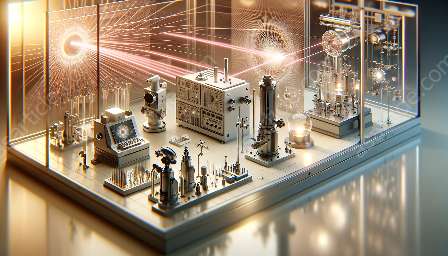Fiber lasers, a revolutionary technology in the field of laser and optics, have quickly gained traction due to their myriad applications and unmatched advantages. In this comprehensive guide, we delve deep into the world of fiber lasers, their construction, working principles, applications, and their impact on the domains of laser technology and optical engineering.
The Genesis of Fiber Lasers
Understanding Fiber Lasers
Fiber lasers are a type of solid-state laser that uses optical fibers, typically doped with rare-earth elements like erbium, ytterbium, or neodymium, as the gain medium. The concept of fiber lasers dates back to the 1960s when scientists began exploring the potential of using optical fibers for laser amplification. It wasn't until the 1990s that fiber lasers started gaining significant attention, and since then, they have undergone rapid advancement, becoming an integral part of modern laser technology.
Construction and Working
In a fiber laser, the core components include the gain medium, typically a doped fiber, and a pump source that excites the gain medium to initiate the laser process. A fiber Bragg grating is incorporated to create the necessary optical feedback, resulting in the generation of a coherent and intense laser beam. The doped fiber's unique properties enable efficient light amplification and emission, making fiber lasers highly versatile and powerful.
Applications and Advantages
Diverse Applications
The versatility and superior performance of fiber lasers have led to their wide-ranging applications across various industries. From industrial cutting and welding to telecommunications, medical surgery, and scientific research, fiber lasers have revolutionized numerous fields. Their ability to deliver high power with excellent beam quality makes them indispensable in precision machining and materials processing.
Advantages over Conventional Lasers
Compared to traditional gas or solid-state lasers, fiber lasers offer several compelling advantages. They are highly efficient, enabling energy savings and reduced operational costs. Additionally, their compact size, robustness, and minimal maintenance requirements make them an attractive choice for industrial and commercial applications. Moreover, fiber lasers exhibit outstanding beam quality, resulting in precise and controlled laser output, making them ideal for intricate and high-precision tasks.
Fiber Lasers in Optical Engineering
The Integration of Fiber Lasers
In the realm of optical engineering, fiber lasers have catalyzed significant advancements. Their unique properties and operational characteristics have enabled engineers to develop cutting-edge optical systems with enhanced performance and capabilities. Fiber lasers have found extensive use in optical communications, where they serve as an integral component for transmitting data through optical fibers over long distances with minimal signal loss.
Future Implications and Potential
The future of fiber lasers holds immense promise for the fields of laser technology and optical engineering. Ongoing research focuses on enhancing the power output and refining the beam quality of fiber lasers, further expanding their applicability. Additionally, the integration of fiber lasers with emerging technologies such as artificial intelligence and robotics is expected to unlock new avenues for their utilization, driving innovation and pushing the boundaries of what can be achieved through laser and optical engineering.

